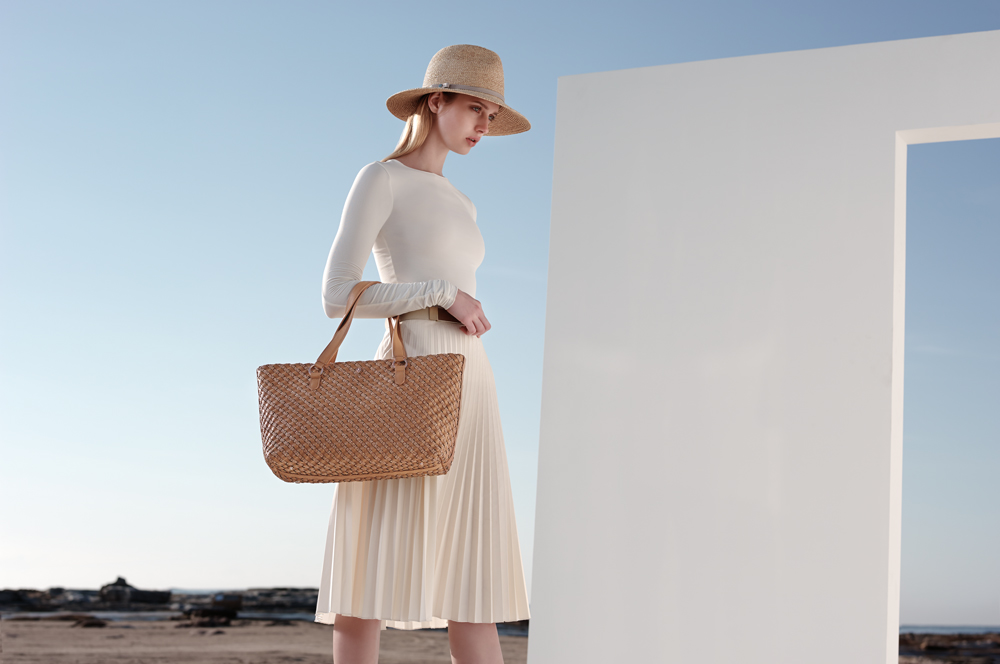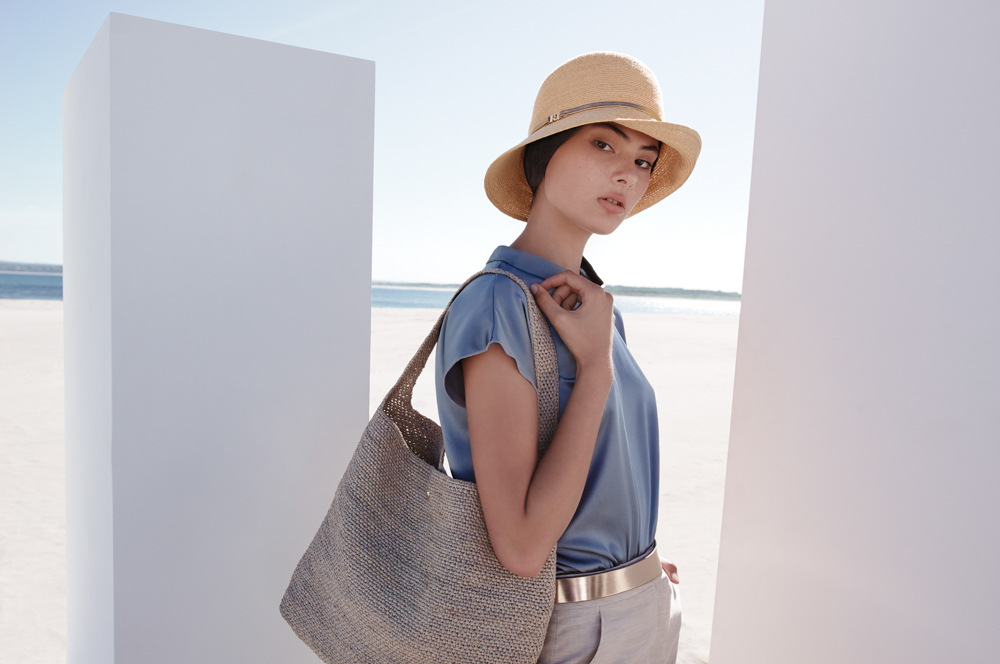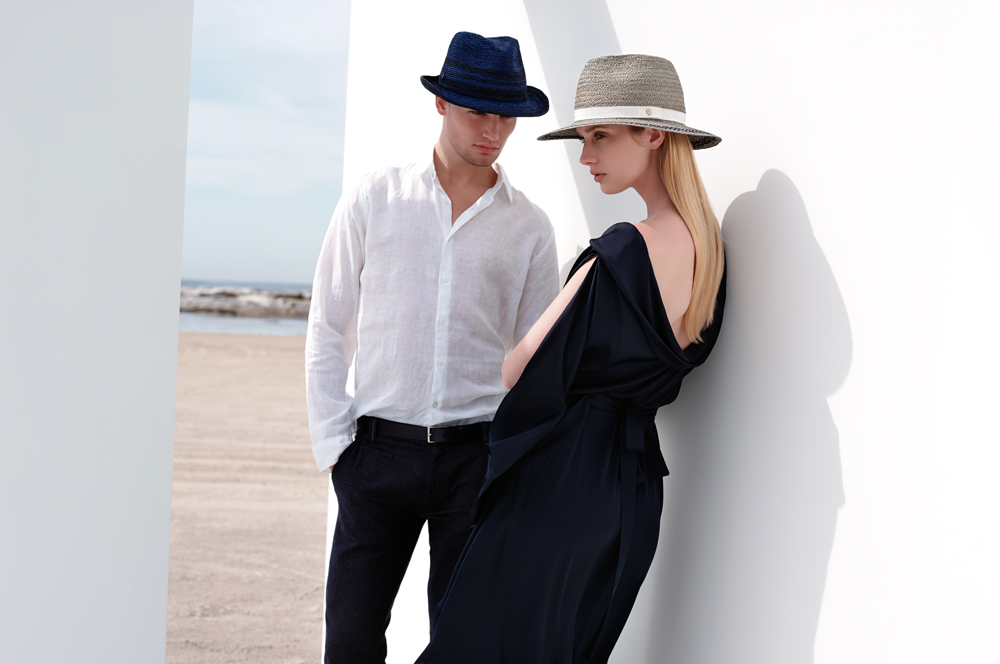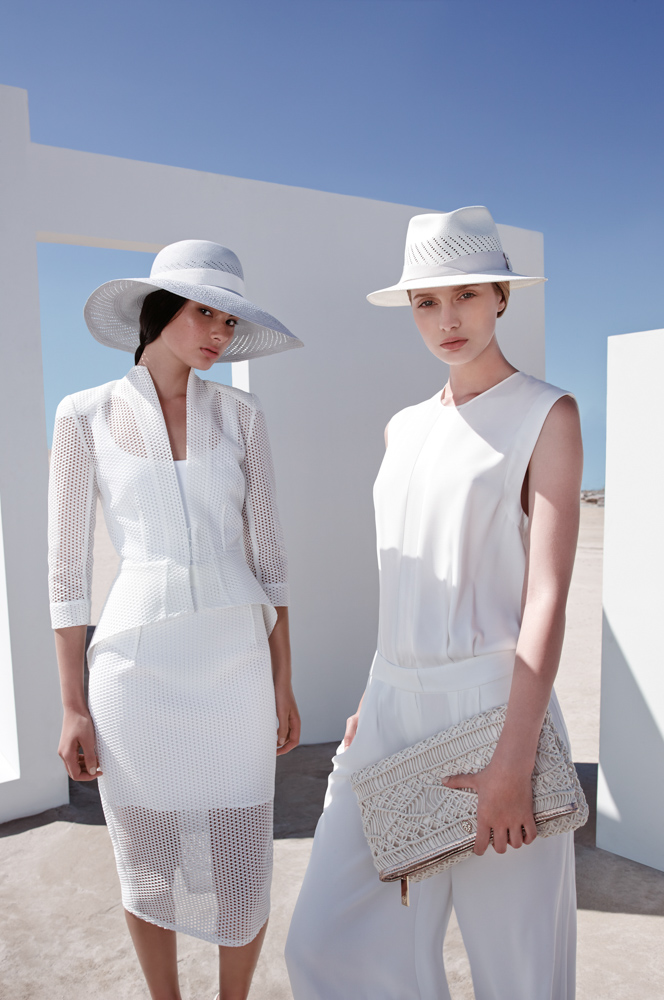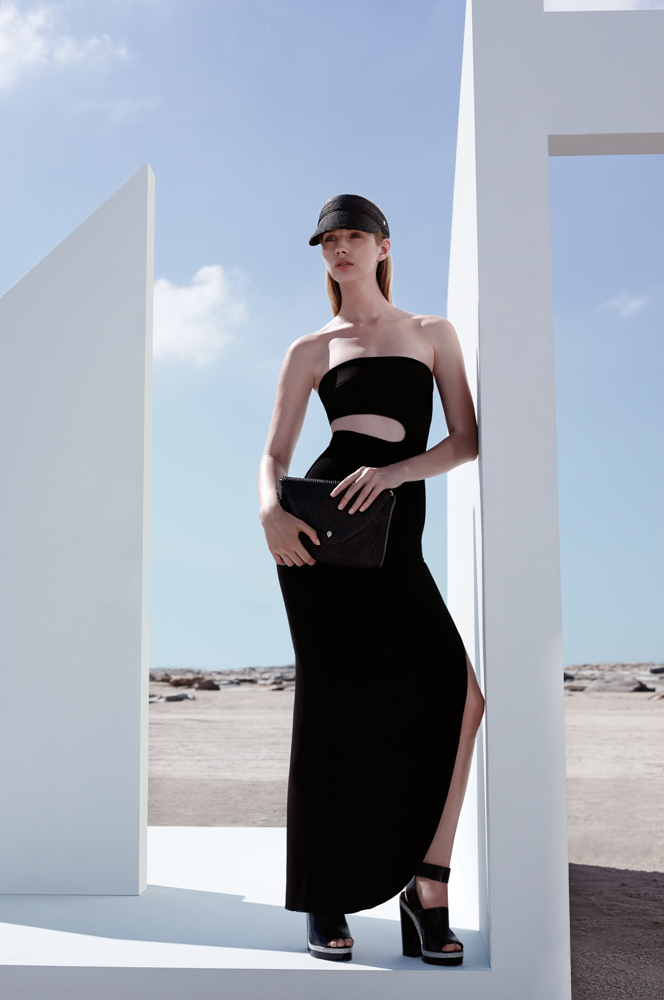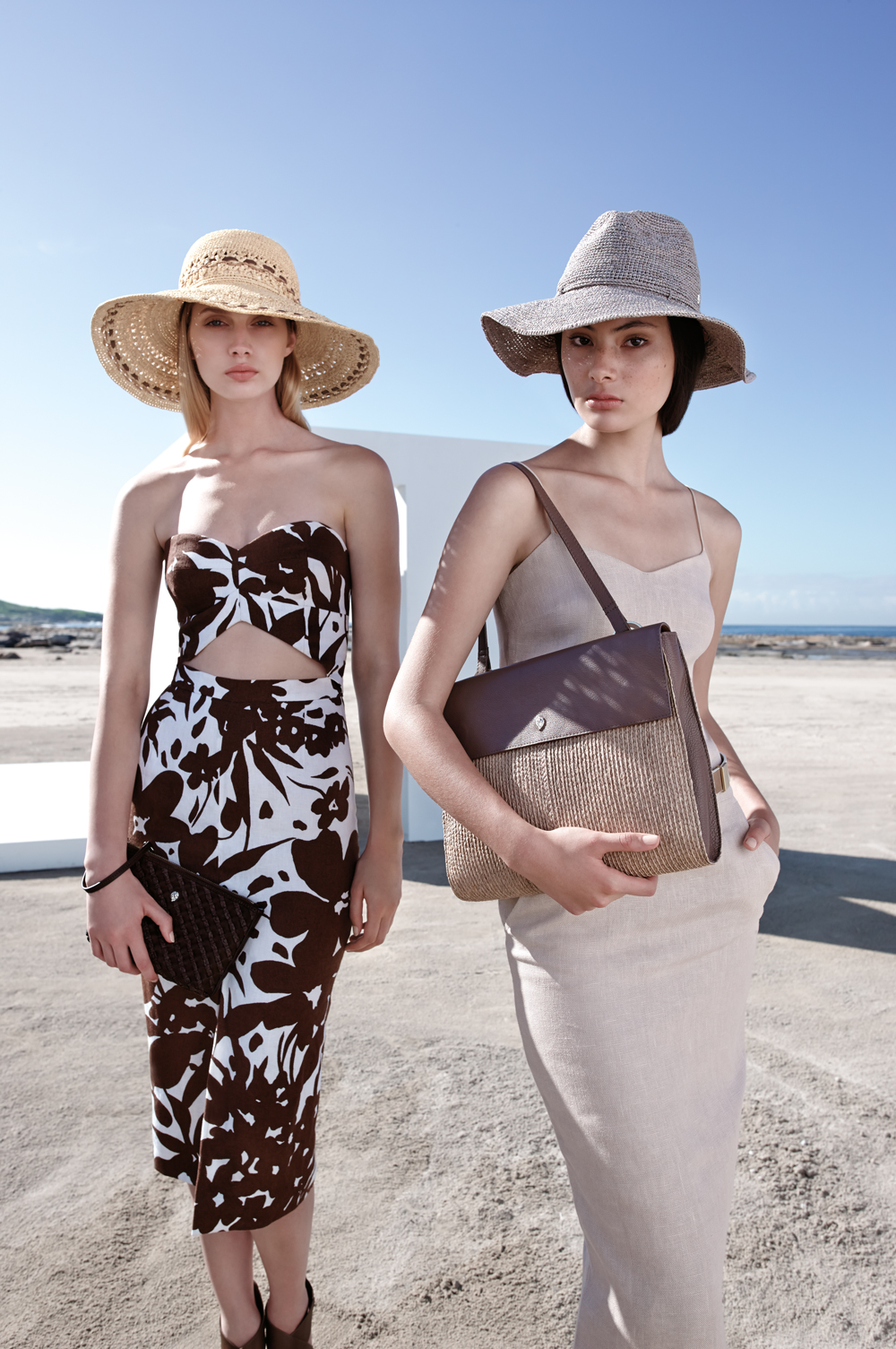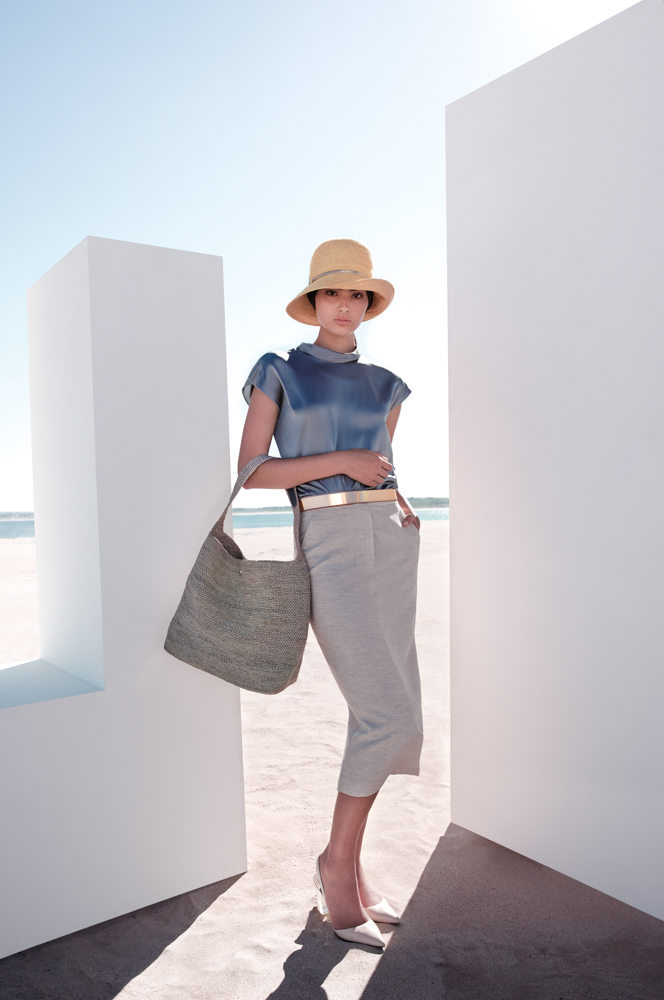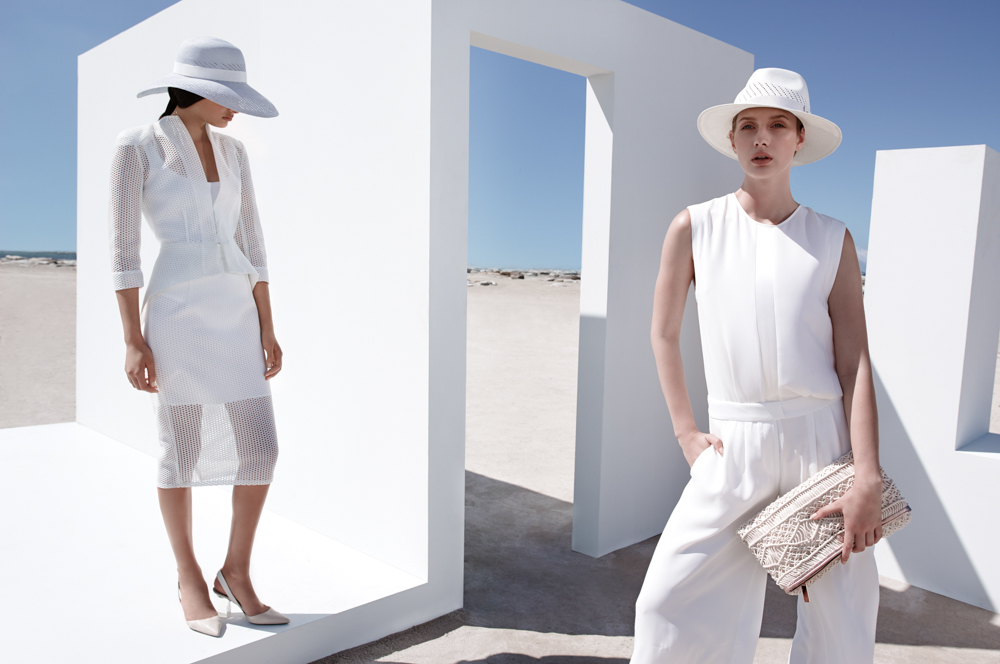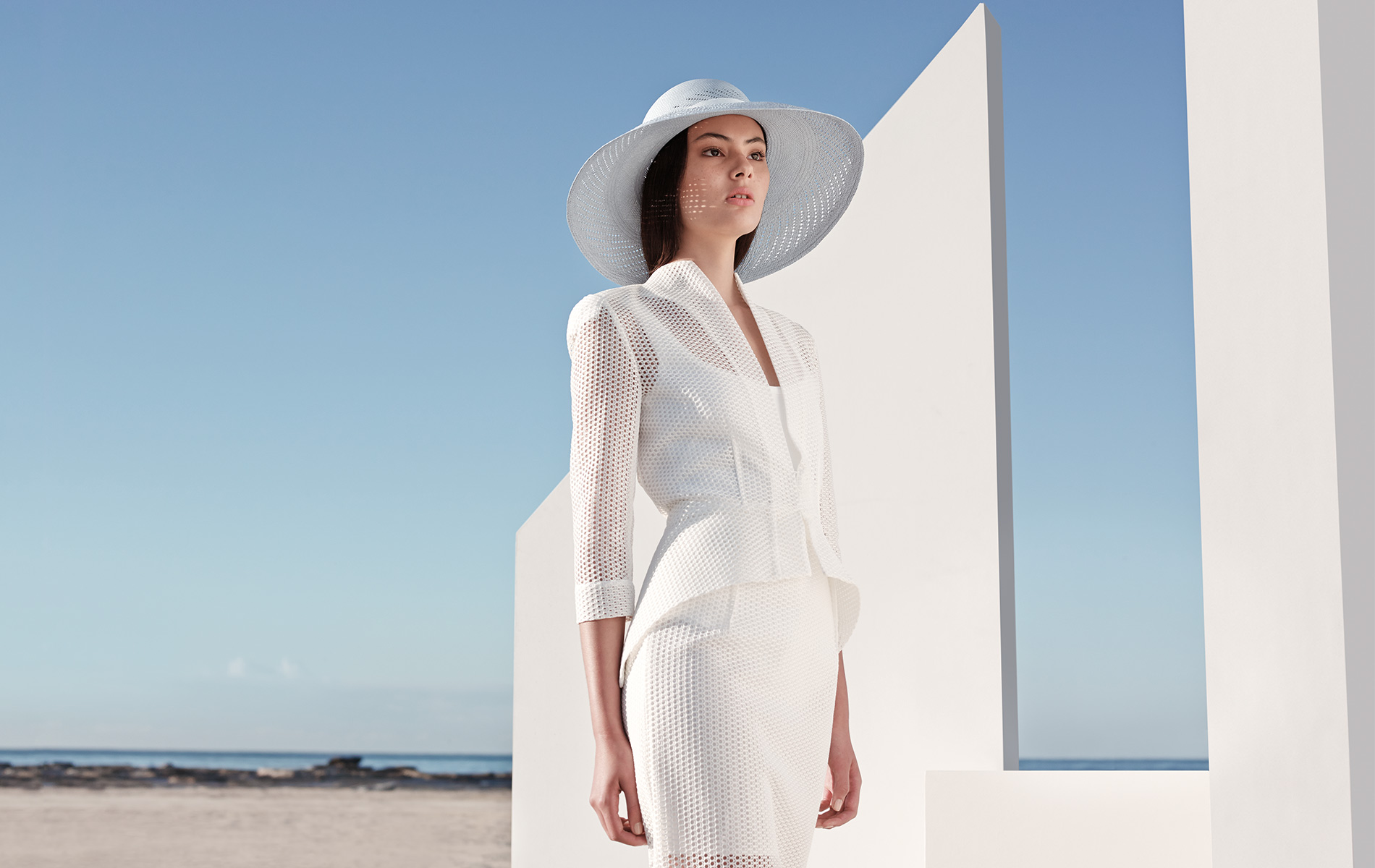
vie-magazine-helen-kaminski
The Craftsmanship of Hats
Helen Kaminski Rules Supreme
By Tori Phelps | Photography courtesy of Helen Kaminski
In fashion circles, the Helen Kaminski brand is synonymous with prestige; the highly regarded accessory line is also extremely popular with celebrities. But status is the last thing on the minds of the creatives behind the Australian hat-and-bag company. Their yardstick is quality, and each mark on that yardstick measures whether a piece captures the passion on which the company was founded.
More than thirty years ago, Helen Kaminski handcrafted a raffia hat to protect her children from the searing Australian sun. When that design—the Classic 5—was discovered by a Vogue editor in a country boutique, Kaminski’s eponymous brand hit the charts with a bullet. Today, that once-modest collection of headwear styles has become a global powerhouse lauded for innovation and, of course, quality.
At the helm now is creative director Ailsa Roe, a UK native and fashion industry veteran who joined the company in 2009. An accessories fan with a passion for by-hand techniques, Roe found her corporate soul mate in Helen Kaminski, which stands out in a mass-produced, assembly-line world by still doing things the old-fashioned way. “The handcrafted pieces in our collections are expressions of individuality,” Roe says. “No two pieces will ever be exactly the same.”
Helen Kaminski retails in nearly thirty countries across five continents, so the lines are designed to reflect a wide variety of climates and lifestyles. Its winter headwear collections range from cool cottons for warmer year-round climates to water-resistant finishes for autumn months and fine, felted wools and pure cashmere hand knits for cooler climates. The summer collections showcase linens, lightweight cottons, raffia crochets, and raffia braids.
The designs transcend cultural and geographic borders, so it’s fitting that the Helen Kaminski workforce does too. The company partners with artisans around the globe who transform age-old techniques into modern looks. Madagascar, which grows the highest-quality raffia palm in the world, became home to the company’s first dedicated workshop in 1985. In 2012, the company opened a workshop in a Sri Lankan village that was badly affected by the 2004 tsunami. Today, it employs over 350 artisans, with an additional 400 paid craftspeople in training.
This global presence and the company’s dependence on nature for both raw materials and design inspirations have influenced the way Helen Kaminski does business. The brand’s long-term commitment to sustainability includes using renewable resources, extending product longevity, and continuously assessing the ways resources are used in order to lessen their environmental impact.
Hats are the perfect accessory to complete and personalize an outfit.
It’s the right thing to do, but it also aligns with what customers want, notes Roe. “In a time when sophisticated global consumers seek products that reflect individual values, personal style, and respect for the environment, the Helen Kaminski legacy is more relevant than ever,” she says.
It doesn’t hurt that the products are just plain amazing. Naturally, they’re designed to look good, courtesy of elements like premium finishes. But they’re also designed to perform well, especially for today’s on-the-go customers. Roe points to their range of practical hats in rollable raffia and felt as some of Helen Kaminski’s most popular. Other hot sellers include visors, hats with wider peaks that complement a street-chic style, and that perennial favorite, the fedora.
As for handbags, she says clutches—of all sizes, shapes, and structures—are back in a big way.
While handbags are always in vogue, hats seem to be hit or miss. Right now, they’re a massive hit, Roe confirms, partly due to the functional features that smart designers are building in. Many Helen Kaminski styles, for example, offer an ultraviolet protection factor (UPF) of 50-plus and are water resistant. More importantly: “Hats are the perfect accessory to complete and personalize an outfit,” she says.
To keep up with evolving consumer desires and fashions, Roe reboots her creative spirit through lots—and lots—of travel. Describing herself as the “ultimate adventurer,” she frequently hops on a flight to explore new places and cultures. She’s danced with Maasai warriors, rafted the Nile, climbed New Zealand glaciers, and splashed with humpback whales. Naturally, these experiences make their way into Helen Kaminski collections. Roe filters them through seasonal color palettes or key prints, ending up with distinctive yet highly wearable pieces.
While handbags are always in vogue, hats seem to be hit or miss. Right now, they’re a massive hit, Roe confirms, partly due to the functional features that smart designers are building in. Many Helen Kaminski styles, for example, offer an ultraviolet protection factor (UPF) of 50-plus and are water resistant. More importantly: “Hats are the perfect accessory to complete and personalize an outfit,” she says.
Hats are the perfect accessory to complete and personalize an outfit.
To keep up with evolving consumer desires and fashions, Roe reboots her creative spirit through lots—and lots—of travel. Describing herself as the “ultimate adventurer,” she frequently hops on a flight to explore new places and cultures. She’s danced with Maasai warriors, rafted the Nile, climbed New Zealand glaciers, and splashed with humpback whales. Naturally, these experiences make their way into Helen Kaminski collections. Roe filters them through seasonal color palettes or key prints, ending up with distinctive yet highly wearable pieces.
Products aren’t just built around Roe’s creative expressions, however. It’s crucial that the company stays tuned to consumer lifestyles in order to deliver not only the aesthetics but the function that their fans insist on. The company’s increasingly mobile, tech-dependent consumers have prompted Helen Kaminski’s lines of travel wallets, passport holders, and cases to hold iPads and tablets. To satisfy vacationers who take winter breaks in the tropics and summer breaks on snowy mountains, the Autumn/Winter 2015 lines of Helen Kaminski and its menswear offshoot, Kaminski XY, will include a capsule collection of favorite raffia pieces that will be available year-round.
Yet with the world at their fingertips, consumers also want a buying experience that’s not mass-produced. In essence, they crave products with a story. “There’s an emerging trend where imperfections are cherished, and the desire to purchase with a conscience is now a real factor in decision making,” Roe says. “We want to know what we’re buying, where it was made, and how it was made.”
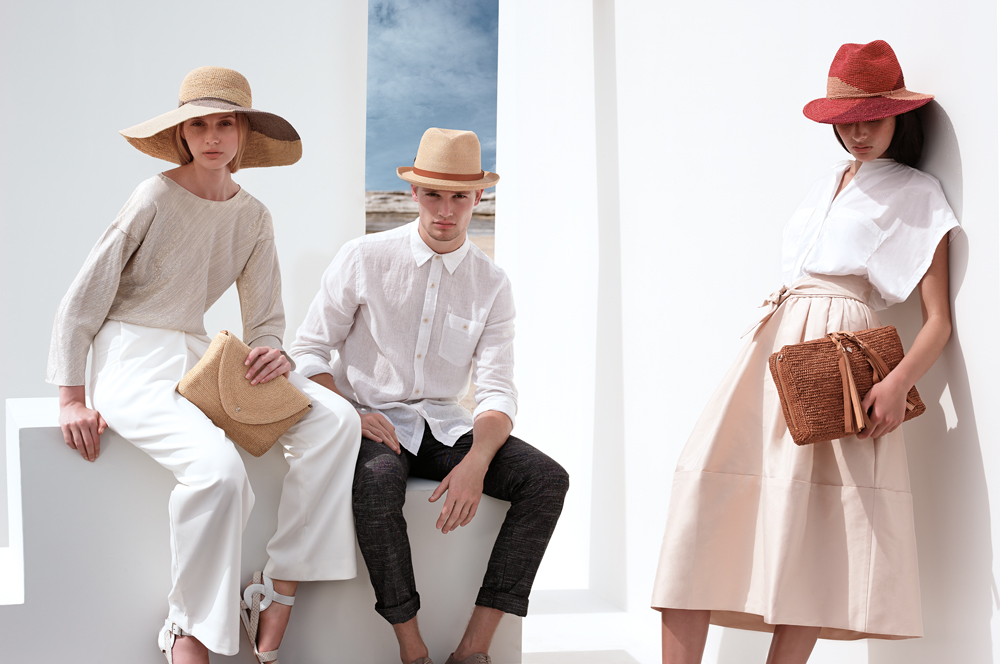
Perhaps that’s why Helen Kaminski is more popular than ever. The artistry and man-hours put into each piece are staggering. Take, for example, the Provence 12 hat, which has eighteen thousand stitches and takes two and a half days to crochet by hand. It takes five days to hand plait a 120-meter coil of raffia braid, with one hat eating up as much as eighty-five meters of braid. A crochet bag—done by hand, of course—can take more than six days to finish.
Because of the labor and skill involved, Roe doesn’t just issue job assignments. She regularly visits the workshops to collaborate with artisans on everything from design to technique, ensuring that both she and they understand the possibilities and limitations of each process. This, she says, is one of the best parts of her job. “There’s nothing more rewarding than creative minds learning from each other and striving to achieve the same end goal,” she says. “It’s always at the forefront of our minds to respect the brand heritage while pushing boundaries, questioning, and moving the brand forward.”
Here’s to another thirty years of pushing boundaries and exceeding expectations.
Yes, You Are a Hat Person
If hats as a fashion statement seem more “British royal family” than “Saturday morning errands,” you might be an American. In the United States, hats are largely seen as tools—a baseball cap when you have to leave the house before your morning shower or a wide-brimmed hat when you’re strolling the beach. But it’s time we started appreciating hats for their form rather than just their function.
Small face: Shorter or medium brims will appear the most balanced for a small face or smaller frame. Fedoras and shorter-brimmed visors will complement your features well. Wider brims can be styled by flipping the brim up at the center front or the sides.
Long or narrow face: Opt for either shallower crowns and medium brims or shorter peak lengths to balance your face shape. Deeper-fitting styles such as the cloche, the beret, and the baker boy will give the illusion of a shortened face shape.
Round face: While you can wear most styles, go for square crowns over round crowns, as taller crowns elongate the face. Choose berets or slouch beanies over close-fitting knit styles in the winter for the most face-flattering silhouettes.
Square face: Longer and wider brims or peaks, cloches, and shorter-angled brims are flattering on you. Deep-fitting styles or voluminous silhouettes such as baker boys and berets are also good picks.
Sharp-angled face: Opt for fedoras and menswear styles to complement your face shape, or choose wider brims or round crowns for a softer look. Styles with flow or movement in the brim will help to achieve this.
Heart-shaped face: You lucky few can wear the majority of headwear styles.
— V —
Share This Story!
KEEP UP WITH THE LATEST STORIES FROM VIE



